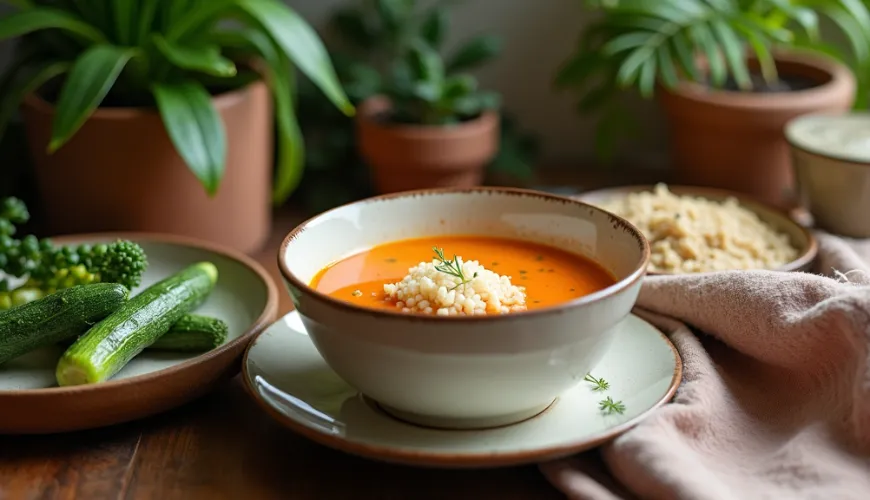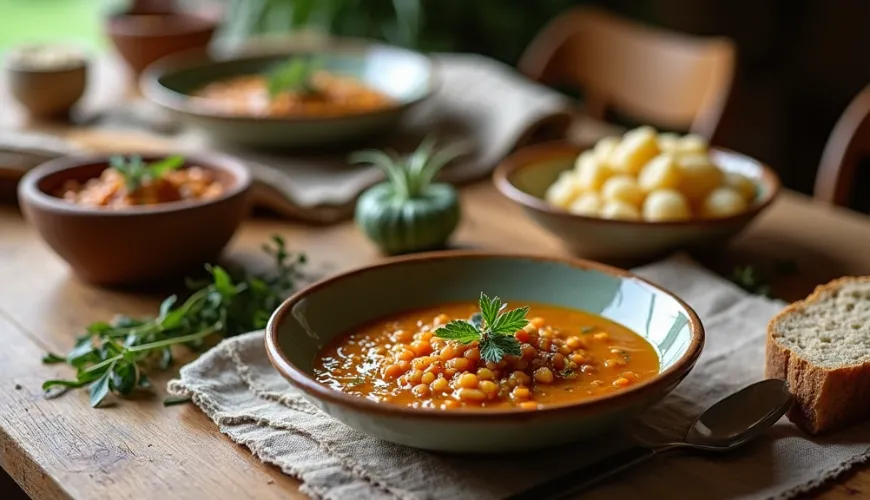
How to Make Prague Roast Beef for Sunday Family Lunch

What Does Prague Beef Roast Hide?
In Czech cuisine, beef holds a firm place—from classic sirloin to goulash and even less known but delicious recipes. One that certainly deserves rediscovery is the Prague beef roast. This dish was once served in upscale Prague restaurants, but today, you are more likely to encounter this specialty in the homes of those who remember it or in menus of establishments focused on traditional Czech cuisine. The beef roast Prague style not only offers a great taste experience but also room for variations that align with modern dietary trends.
How Prague Tastes on a Plate
Prague beef roast is no bland affair—its magic lies in the combination of simple ingredients, long preparation, and a slightly sweet taste provided by a specific mix of root vegetables, tomato paste, and onions, often blended into a thick sauce. Fragrant spices like allspice, bay leaf, and pepper elevate the dish to a festive Sunday lunch. Some older versions of the recipe also include a teaspoon of sugar or a drop of lemon juice, whose acidity helps balance the sweetness of the vegetables.
The beef used is typically from the forequarter—such as beef chuck or rump, suitable for long stewing. The result is tender, juicy meat that falls apart under a fork and beautifully blends with the rich, dark sauce.
When it comes to sides, the absolute classic is steamed rice, which perfectly complements the strong flavor of the meat and sauce with its neutral taste. Although dumplings would be an option, traditionally, rice was more commonly served with Prague beef roast, giving the whole dish a slightly "bourgeois" character.
A Recipe from Great-Grandma, but with a Modern Approach
There are several recipes for Prague-style beef roast. They differ not only in the meat used but also in the seasoning or preparation of the sauce. One of the most commonly repeated methods looks like this:
Ingredients:
- 800 g of beef (chuck, neck, rump)
- 2 large onions
- 2 carrots
- 1 parsley root
- a piece of celery
- 2 tablespoons of tomato paste
- 3 allspice berries
- 2 bay leaves
- 5 black peppercorns
- salt
- oil or lard for searing
- 1 tablespoon of sugar (optional)
- a drop of lemon juice or vinegar (optional)
- water or broth
The meat is first seared on all sides until browned to seal it and create a crust that keeps the juices inside. Then, onions are sautéed in the pot, vegetables, paste, and spices are added, and everything is briefly sautéed before the meat is returned. Finally, the dish is topped with hot water or broth and slowly stewed, even for two hours, until the meat is tender. The sauce is then strained or blended until smooth and possibly seasoned. The result is a deep, full flavor that recalls childhood spent by the hot stove.
What Was Served in Prague Cafés in the First Republic?
Dishes like Prague beef roast are bearers of the era. They remind us of how people ate during the First Republic when bourgeois cuisine began to draw inspiration from France while preserving rustic Czech roots. Back then, housewives didn't have access to modern seasonings, yet they managed to create amazing dishes using minimal ingredients and maximum care.
A cookbook from 1932 describes "Beef Roast Prague Style" as a basic dish suitable "for everyday and festive days," recommending serving it with "steamed rice or macaroni." Even then, people recognized the importance of simplicity—and perhaps that's why this recipe is once again coming into vogue.
Today, in the age of instant meals and semi-finished products, slow stewing and homemade preparation are gaining value again. People are returning to their roots and seeking dishes that not only taste good but also tell a story.
Rice – Ordinary but Underrated
Rice is often seen as a boring side dish, but in reality, it plays a key role in many recipes. For Prague beef roast, its task is to absorb the sauce, soften the overall impression of the dish, and offer a contrast to the heavier sauce.
If prepared correctly—not sticky, in loose grains, ideally on butter and slightly salted—rice can be not just a complement but a full-fledged part of the taste experience. Many today also choose brown or jasmine rice, introducing modern elements into the traditional recipe without losing authenticity.
How to Incorporate Beef Roast into a Modern Diet?
In a time when more people are trying to reduce meat consumption or seek more sustainable ways of eating, beef roast might seem like a relic. But even this recipe can be adapted to meet current nutritional demands. For example, smaller portions of meat supplemented with more vegetables, served on rice or a legume side, can create a balanced plate full of flavors and nutrients.
Another option is to use quality, local organic meat, which not only tastes better but also has a significantly smaller environmental impact than industrially processed products. Combined with homemade preparation, Prague beef roast can become part of a sustainable menu without losing its original authenticity.
A Small Change, A Big Difference
One family decided to replace ordinary restaurant lunches with home cooking—and one of the first attempts was Prague-style beef roast according to an old grandma's recipe. The result? Not only did they save money, but they also found a new ritual: every Sunday, a shared meal preparation, where they chat, chop vegetables, and stir the sauce, while the children help with setting the table. "The aroma that fills the apartment is priceless," says the mother of three, who returned to her roots thanks to this dish.
And what's best? The meat can be prepared a day in advance, and the sauce is even better the next day—making it an ideal meal for hectic weeks when you want something nutritious but don't want to spend hours at the stove.
It's precisely time, aroma, and memories that turn an ordinary meal into something more than just lunch—it makes it an experience. And Prague beef roast, whether from a 1932 recipe or with modern adjustments, certainly belongs to such experiences.

